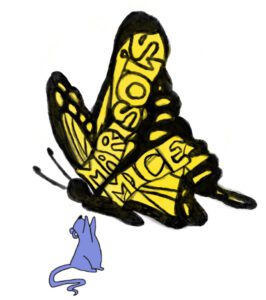Marisol's Mice
Marisol's Mice Project on eIF2B-related Leukodystrophy
From: Professor Orna Elroy-Stein
Department of Cell Research and Immunology
George S. Wise Faculty of Life Sciences
Tel Aviv University
Leukodystrophy is a disease that affects myelin, the insulator of the nerve fibers in the brain. Without sufficient insulation, the brain’s nerves cannot function properly.

Leukodystrophy is a disease
 That affects myelin, the insulator of the nerve fibers in the brain. Without sufficient insulation, the brain’s nerves cannot function properly. The building blocks for myelin production are encoded by genes. A mistake (genetic mutation) in a critical code within the related genetic information leads to less myelin production or to production of abnormal myelin. As a result, myelin gradually deteriorates, causing the patient to lose otherwise normal brain function. There are many types of leukodystrophies, depending on the affected gene and its role in myelination. Marisol had "Vanishing White Matter" leukodystrophy (or “CACH”), termed "eIF2B-related leukodystrophy" after the name of the mutated gene. Only people who inherited mutated eIF2B genes from both birth parents will develop the disease. Interestingly, eIF2B is not directly involved in myelin formation, but rather is required for general protein synthesis, a fundamental process common to all living cells. It is therefore surprising that a mutation in this gene is not harmful to other cell types in the body as it is for brain myelinating "glia" cells.
That affects myelin, the insulator of the nerve fibers in the brain. Without sufficient insulation, the brain’s nerves cannot function properly. The building blocks for myelin production are encoded by genes. A mistake (genetic mutation) in a critical code within the related genetic information leads to less myelin production or to production of abnormal myelin. As a result, myelin gradually deteriorates, causing the patient to lose otherwise normal brain function. There are many types of leukodystrophies, depending on the affected gene and its role in myelination. Marisol had "Vanishing White Matter" leukodystrophy (or “CACH”), termed "eIF2B-related leukodystrophy" after the name of the mutated gene. Only people who inherited mutated eIF2B genes from both birth parents will develop the disease. Interestingly, eIF2B is not directly involved in myelin formation, but rather is required for general protein synthesis, a fundamental process common to all living cells. It is therefore surprising that a mutation in this gene is not harmful to other cell types in the body as it is for brain myelinating "glia" cells.
In attempts to understand the malfunction of eIF2B-mutated cells, we started our research by using cells from skin biopsies derived from unaffected and affected children. We found that cells derived from patients are hyper-sensitive to physiological stress. To learn how abnormal response to cellular stress may affect myelin formation and maintenance we need to look at brain cells, which are obviously not available from human patients. Therefore, we decided to generate a mouse model for the disease using advanced genetic engineering techniques to introduce into its genome a specific mutation in the eIF2B gene(s). We had a large choice of different eIF2B-leukodystrophy-causing mutations carried by human patients. Finally we chose the one of Marisol, since she inherited similar eIF2B mutation from both her birth mother and birth father.
The generation of the genetically engineered mice required two years of extensive lab work. Today we have a big colony of eIF2B-Marisol's Mice which represent the first and the only animal model available in the world for the study of eIF2B-related leukodystrophy. These experimental mice provide, for the first time, a unique opportunity to study the effect of the mutation on the biochemistry of the brain. We take great care of the mice and try to enhance their comfort. All the experimental procedures we use are approved by the Tel Aviv University Animal Care Committee in accordance with national law.
The Mice have motor function deficits at an early age, but their neurological symptoms are mild, akin to the late onset form of the human disease. This points to the importance of environmental stress in disease progression. Marisol's Mice recently provided indication for delayed and abnormal development of specific brain regions. This important information was achieved through a frequent series of live magnetic resonance imaging sessions to follow brain development and analyze whole-brain quantitative regional differences. In addition, Marisol’s Mice provided evidence for a defective cellular role of a specific type of brain glial cells, which support nerve cells. Marisol's Mice open up the exciting opportunity to address questions related to the regulation of protein synthesis during key events in myelin formation and maintenance. Learning more about the fundamental aspects of myelination and its control will emerge as an important step toward finding a therapy for eIF2B-related leukodystrophy and additional myelin-associated diseases including multiple sclerosis. Marisol's Mice also serve as a very powerful experimental tool to study the effect of environmental stressor on disease progression.
Endless experiments can be designed using Marisol's Mice to study numerous aspects of the disease. For the latest update on Dr. Elroy-Stein's research using Marisol's Mice, please click Marisol Foundation Update | Dr. Elroy-Stein.